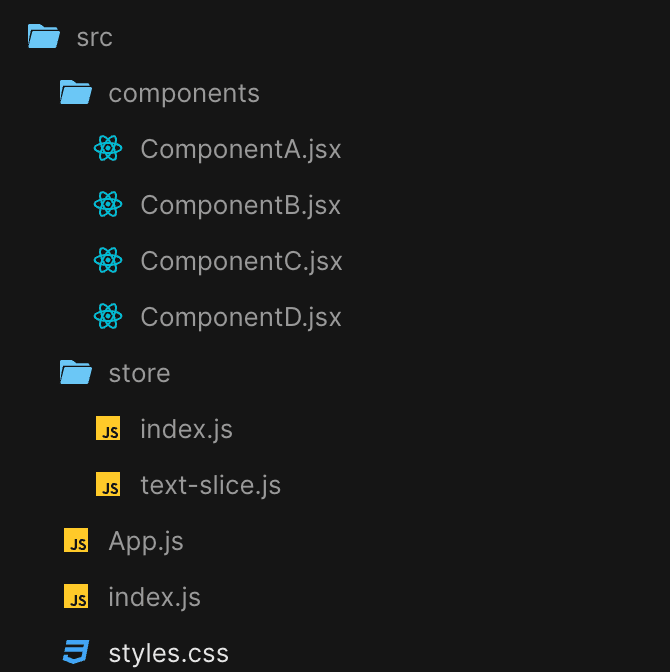
Yuko
Posted on March 7, 2022

This is a series of memos referring to the ways of React state management: context API, Redux, Redux toolkit and Recoil. The topic in this article is Redux Toolkit.
The chart below is the whole image of this practice application. ComponentA accepts user input text and passes it over to ComponentB as a prop. At the same time, dispatch the action to save the data in the store so that ComponentC and componentD can use it.

Redux Fundamentals, Part 1: Redux Overview | Redux
This is the image of this application.
1) Set up slices, and store
First of all, you need to install react-redux and @reduxjs/toolkit.
npm install @reduxjs/toolkit react-redux
text-slice.js
import { createSlice } from "@reduxjs/toolkit";
const textSlice = createSlice({
name: "text",
initialState: {
text: null,
},
reducers: {
submit(state, action) {
state.text = action.payload;
},
},
});
export const textActions = textSlice.actions;
export default textSlice;
index.js
import { configureStore } from "@reduxjs/toolki(http://twitter.com/reduxjs/toolkit)";
import textSlice from "./text-slice";
const store = configureStore({
reducer: { text: textSlice.reducer },
});
export default store;
2) Provider
index.js
import React from "react";
import ReactDOM from "react-dom";
import "./index.css";
import App from "./App";
import { Provider } from "react-redux";
import store from "./store/intex";
ReactDOM.render(
<Provider store={store}>
<App />
</Provider>,
document.getElementById("root")
);
3) useDispatch, useSelector
ComponentA
import { useState } from "react";
import { useDispatch } from "react-redux";
import { textActions } from "../store/text-slice";
import ComponentB from "./ComponentB";
const ComponentA = () => {
const [value, setValue] = useState("");
const dispatch = useDispatch();
const changeHandler = (e) => {
setValue(e.target.value);
dispatch(textActions.submit(e.target.value));
};
return (
<>
<input type="text" value={value} onChange={changeHandler} />
<ComponentB text={value} />
</>
);
};
export default ComponentA;
ComponentC
import { useSelector } from "react-redux";
const ComponentC = () => {
const text = useSelector((state) => state.text.text);
return (
<>
<h1>Uppercase</h1>
<h2>{text && text.toUpperCase()}</h2>
</>
);
};
export default ComponentC;
ComponentD
import { useSelector } from "react-redux";
const ComponentD = () => {
const text = useSelector((state) => state.text.text);
return (
<>
<h1>Lowercase</h1>
<h2>{text && text.toLowerCase()}</h2>
</>
);
};
export default ComponentD;
The whole code is available here
Thank you for reading :)
The original article is here

Posted on March 7, 2022
Join Our Newsletter. No Spam, Only the good stuff.
Sign up to receive the latest update from our blog.

